Regardless of whether you’re learning new words, playing a guessing game, or looking for new cooking ideas, I’m sure this list of vegetables that start with N will come in handy to you.
This list of veggies comes with lots of different tastes, colors, health benefits, and plenty of FUN FACTS. So, let’s see:
1. Nettle

I’m sure many of you didn’t know that nettle is ACTUALLY a vegetable. Surprise, surprise! This popular plant is not only used for making tea (and fighting those boring UTIs) but also in salads, soups, and stews.
Nettle is a famous plant in traditional medicine because its leaves and roots contain lots of minerals, vitamins, and essential amino acids.
A MILLION-DOLLAR QUESTION: Why does nettle cause the burning sensation when you touch its leaves? It’s because the stem and leaves of the nettle plant are covered with “needles” that contain various chemicals. (The more you know!)
FUN FACT: Ancient Egyptians used stinging nettle to treat lower back pain and arthritis, whereas Roman troops rubbed nettle on themselves to help them stay warm.
2. Napa cabbage
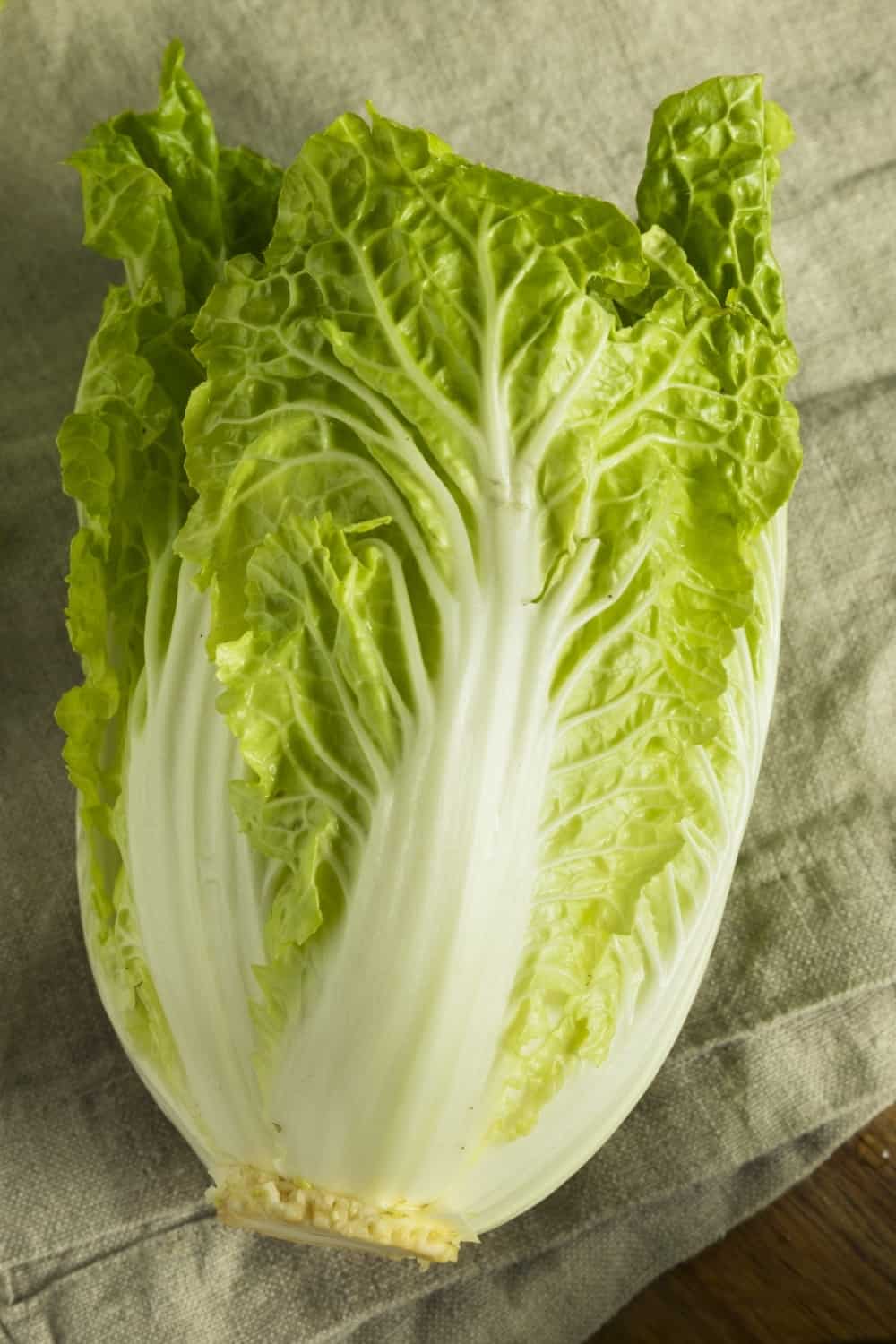
As the name implies, Napa cabbage is a type of cabbage grown in the Napa Valley region of California. It’s also known as “Chinese cabbage” or “Tatsoi”. Its mild flavor and tender leaves are a blessing for salads and stir-fries.
Are you hungry?
– Me too!
Back to the facts. Napa cabbage belongs to the Brassica family, and it contains high levels of vitamin C, B6, B9, K, calcium, copper, iron, manganese, and dietary fiber.
DID YOU KNOW? One cup of napa provides 18% daily value of vitamin B6.
Speaking of both tasty and healthy!
3. Nori

Nori, also known as “laver” and “sea lettuce”, is a seaweed. It has a crispy texture and a classic seaweed taste – salty, fishy and umami. Nori is the most common seaweed used in cooking. It can be found dried or fresh, and it is commonly eaten as a wrapper for sushi.
Nori is rich in minerals, vitamins, and protein. It contains up to 50% protein by weight, and it’s a good source of iron, calcium, magnesium, and iodine.
HISTORY OF NORI: Nori was first mentioned in 701 AD as a method of paying tax. Back then Nori came in a thick paste form. The first traditional sheet Nori was created in 1750.
4. Negi onion
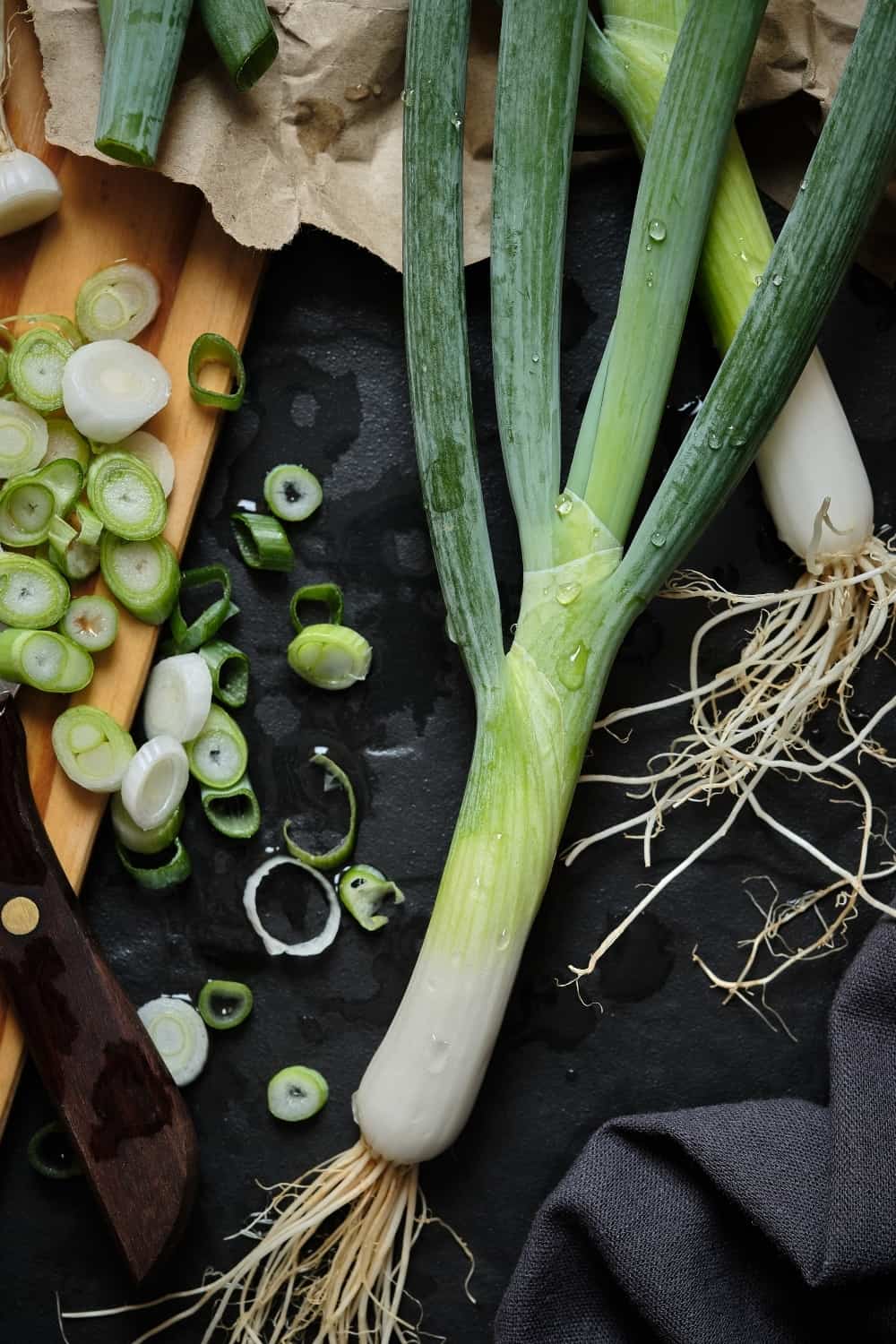
Negi is the Japanese name for Welsh onion. This type of onion is longer and thicker, and is used raw and popularly cooked in Japanese cuisine.
OKAY, WHAT’S SO SPECIAL ABOUT NEGI ONION? It can withstand long cooking and because of that it’s a popular ingredient in hot pots, stews, and nimono. (Yummy!)
Also, Negi onion (ネギ) has a few “nicknames” that I cannot forget to mention:
• Naga Negi (“long onion” 長ネギ)
• Shiro Negi (“white onion” 白ネギ)
• Tokyo Negi (東京ネギ).
See also: 27 Vegetables That Start With P (From Potato To Peas!)
5. Nanohana
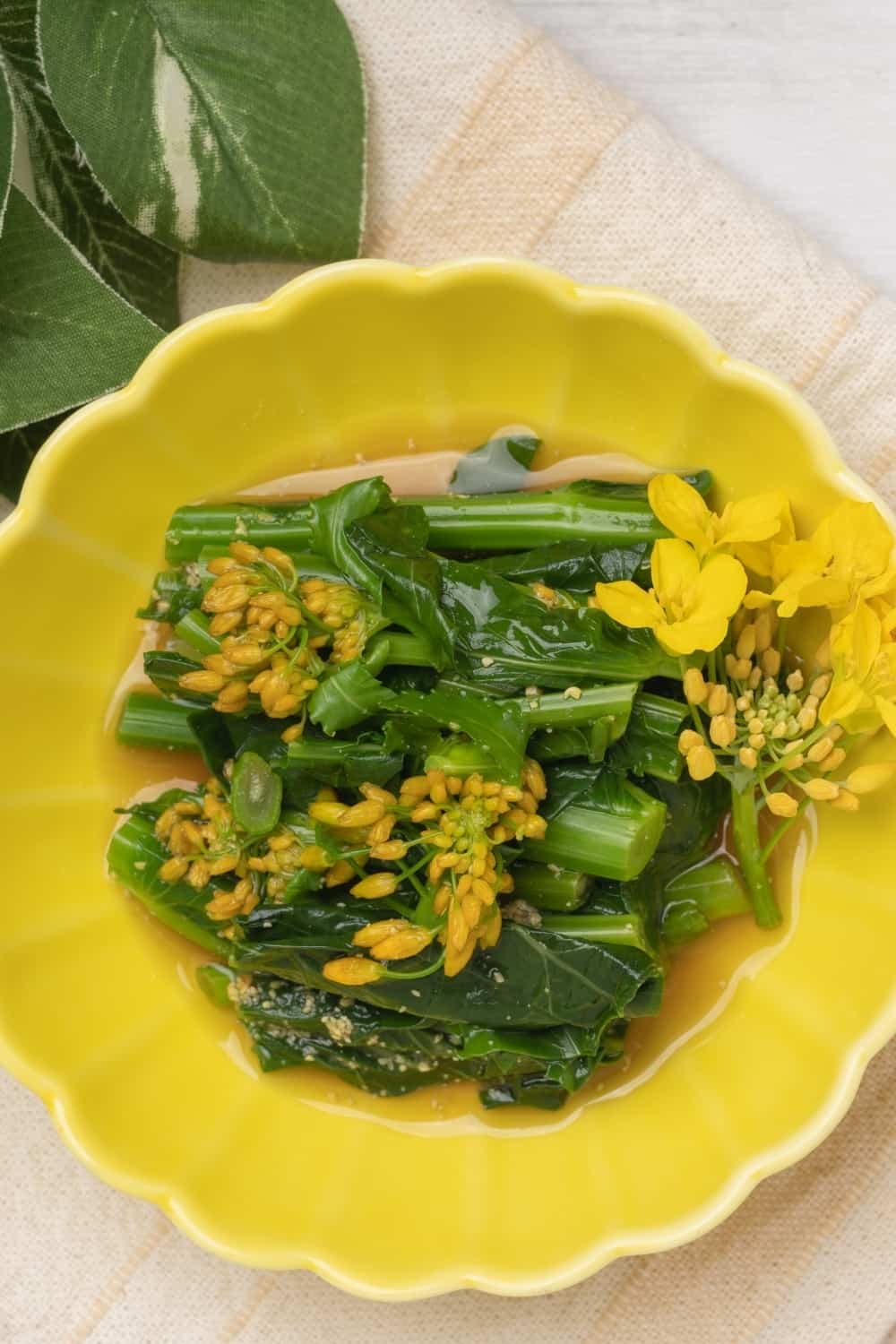
Nanohana is a type of mustard green vegetable that is grown in Japan. It has a mild flavor and can be eaten raw or cooked. The leaves are long and thin, usually harvested when they reach around 15 centimeters in length.
Nanohana is botanically classified as Brassica napus, and it has been cultivated in Japan for centuries. However, it was not until the 20th century that it became popular outside of Japan.
FUN FACT: Nanohana (Japanese) means “vegetable flower” in English and it marks the beginning of spring in Japan. Hooray!
6. Neem
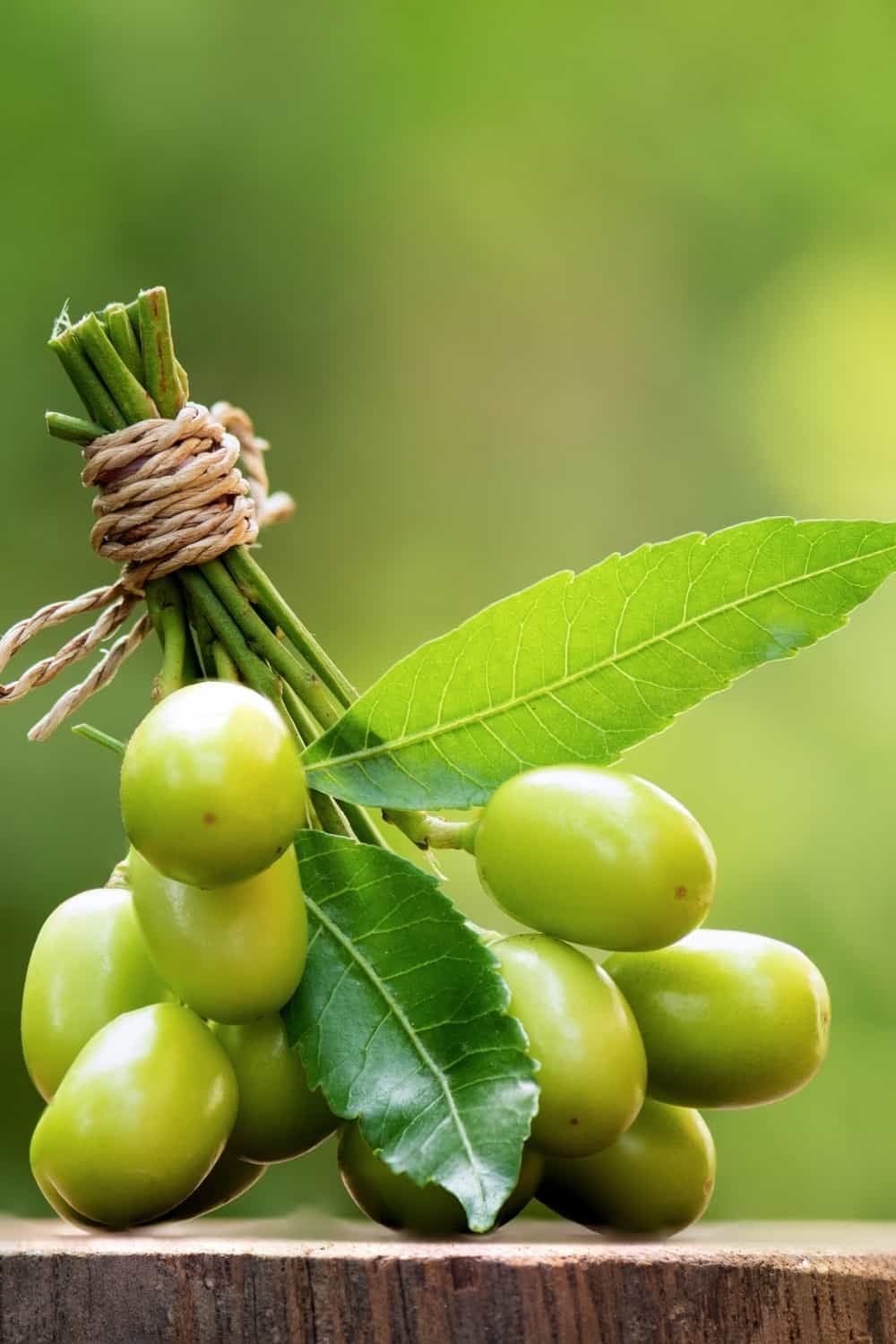
Neem is a plant native to India and Pakistan, and it has been used for centuries in Ayurvedic medicine. Neem leaves are used to make a paste that can be applied to the skin as an antiseptic or taken orally as a treatment for diabetes, fever, and other conditions.
This plant is also used in cosmetics. Oil extracted from the seeds of the plant can be used directly as an insect and mite repellent, insecticide and fungicide.
But that’s not all!
Neem leaves are also used in cooking. (Speaking of a versatile plant!) Its leaves have a bitter taste and are popularly added to salads or curries.
FUN FACT: Neem is an evergreen tree, but in severe drought it may shed most of its leaves or nearly all leaves.
7. Nasturtium
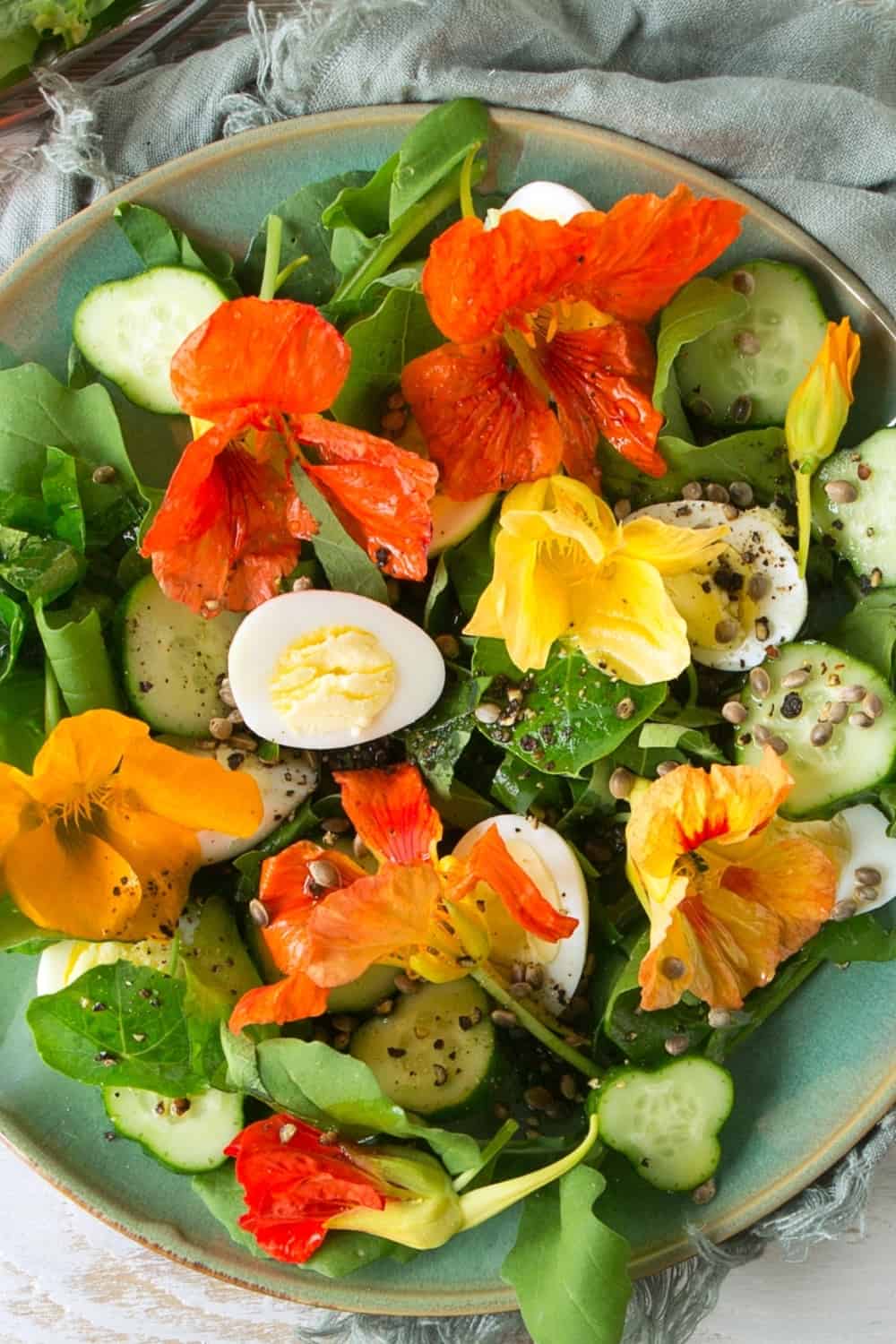
Nasturtium is a genus of a small number of plant species and belongs to the family Brassicaceae (cabbage family). It is native to South America and Central America, and is popularly used in salads or as a garnish.
Nasturtiums are also used for medicinal purposes for their anti-inflammatory properties. They can also be used to treat skin conditions such as acne, eczema, and psoriasis.
Leaves, flowers and seeds of this plant are all edible. You can add the leaves and flowers to salads and sandwiches, and pickle seeds in vinegar.
FUN FACT: The name Nasturtium comes from the Latin nasus tortus, meaning “twisted nose” which indicates the physical response to its hot, peppery flavor.
8. Niger cabbage
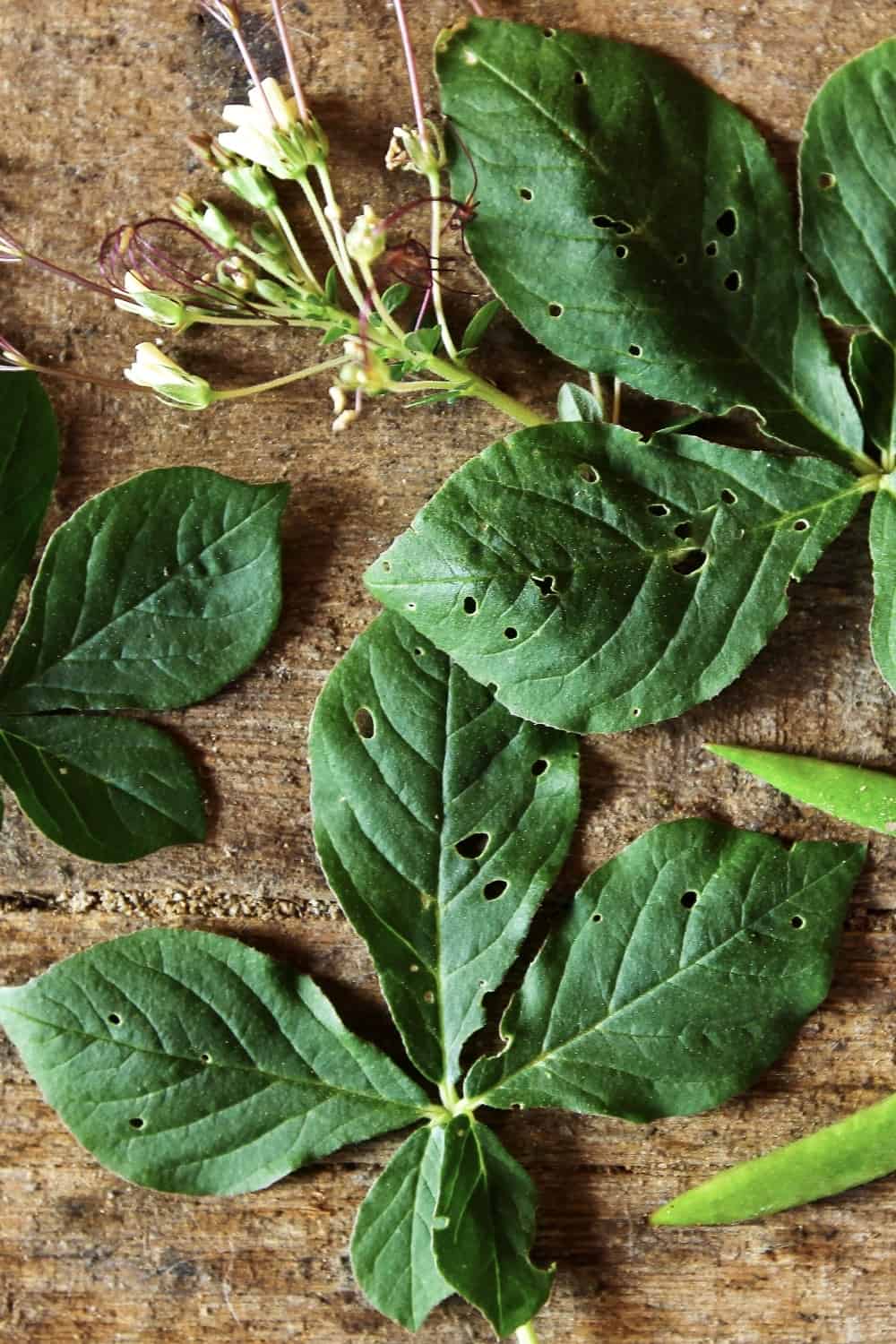
Niger cabbage, also known as “African cabbage” or “African kale”, is a vegetable popular in many African countries. It can grow to the size of a turnip and has the color of a watercress.
Niger cabbage can be eaten raw or cooked. Raw Niger cabbage can be used as a salad green, and cooked Niger cabbage can be used as a side dish.
Besides that, African cabbage has antibacterial and antiseptic properties, and it’s used in the treatment of skin ailments and allergies.
FUN FACT: Cabbage is from the family Cruciferae. The family name comes from the Latin word meaning cross (because the flowers are cross-shaped).
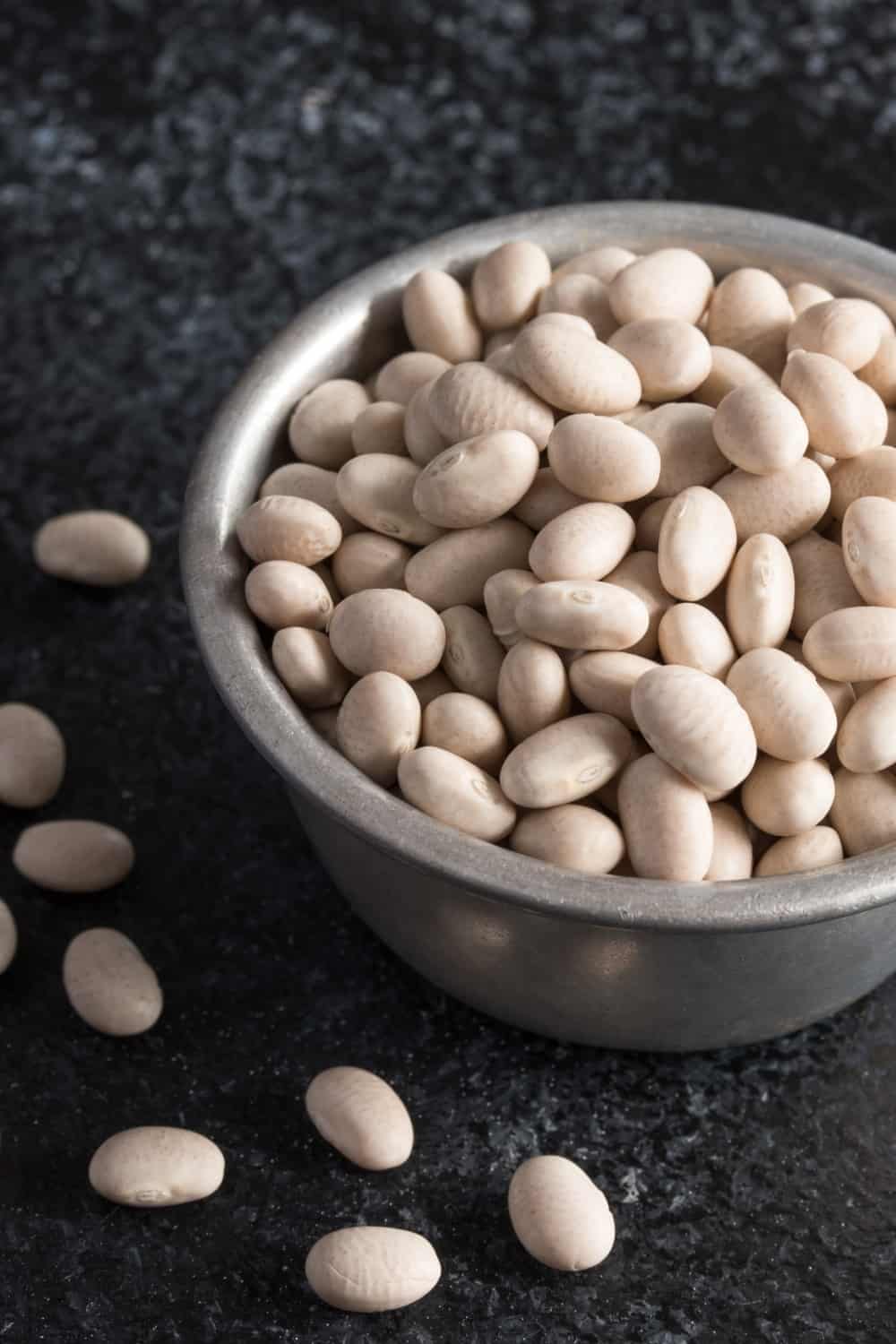
Navy beans are one of the most popular dried beans in the United States. They are also called pea beans, and white peas. They have a similar flavor and texture to Great Northern beans. These beans are a great source of protein and fiber.
They can be eaten as a side dish, or they can be used in soups or stews, and they are found on the menu daily in the U.S. Senate’s restaurant.
Yup, they are that popular!
They are also one of the best substitutes for black beans.
WHY “NAVY”? In the 19th century, the U.S. Navy began issuing these beans as standard ration for sailors on their warships due to their rich nutritional value, low cost, and long storage life.
10. Neeps
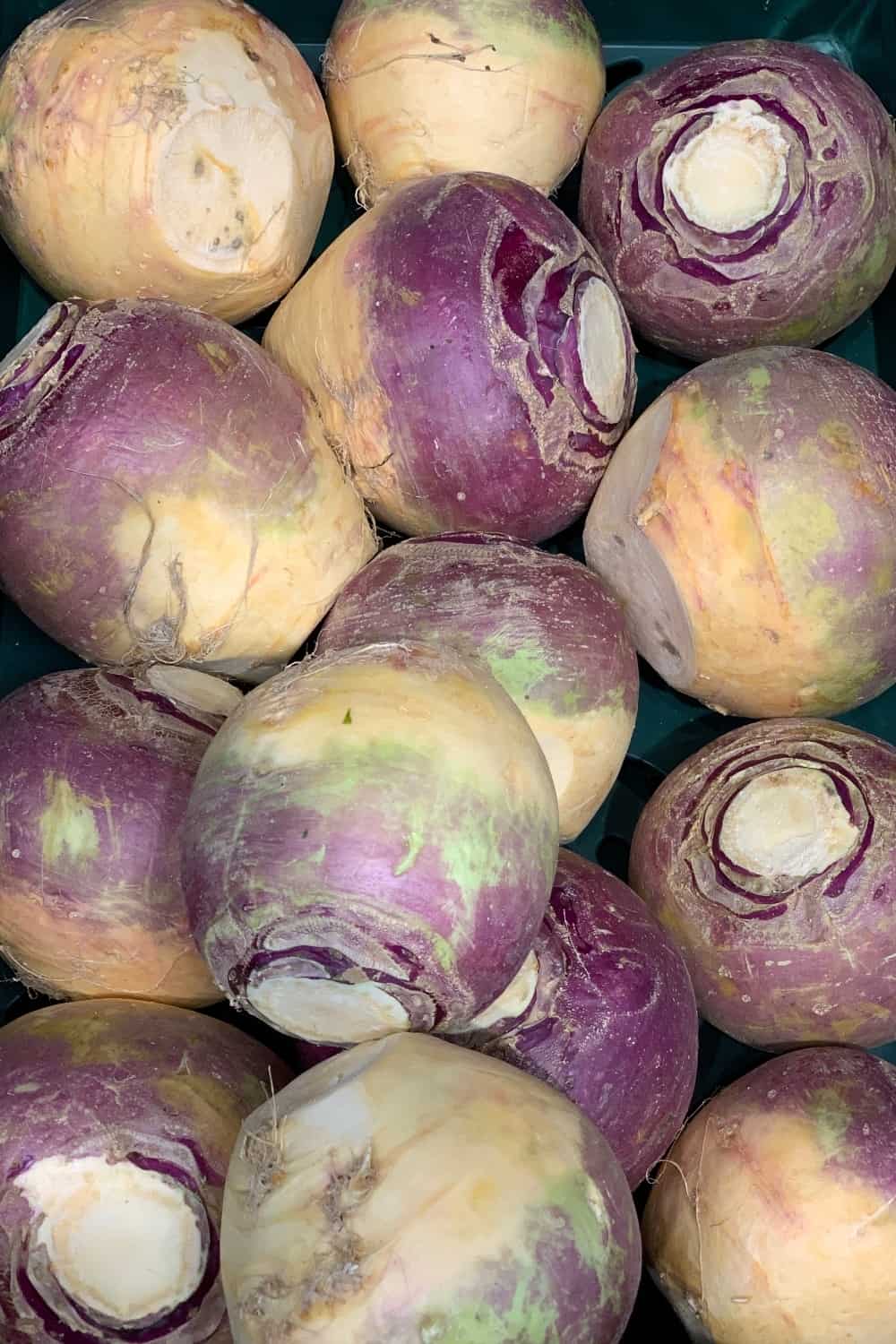
Neeps are the yellowy-orange winter vegetable popularly used in soups and stews. Well, “neeps” is just the Scots word for swede, and “nips” is short for “turnips”.
Neeps are the traditional Scottish accompaniment to haggis (Scotland’s most famous dish). This dish is ideal for First footing, Hogmanay celebrations, or a Burns Night supper.
Neeps in some other languages:
• Arabic: Lafat naba’at
• Chinese: Wùjing
• Croatian: Repa
• Czech: Vodnice
• Danish: Majroe
• Dutch: Raap
• Finnish: Nauris
• French: Navet
• German: Steckrübe
11. Nopal
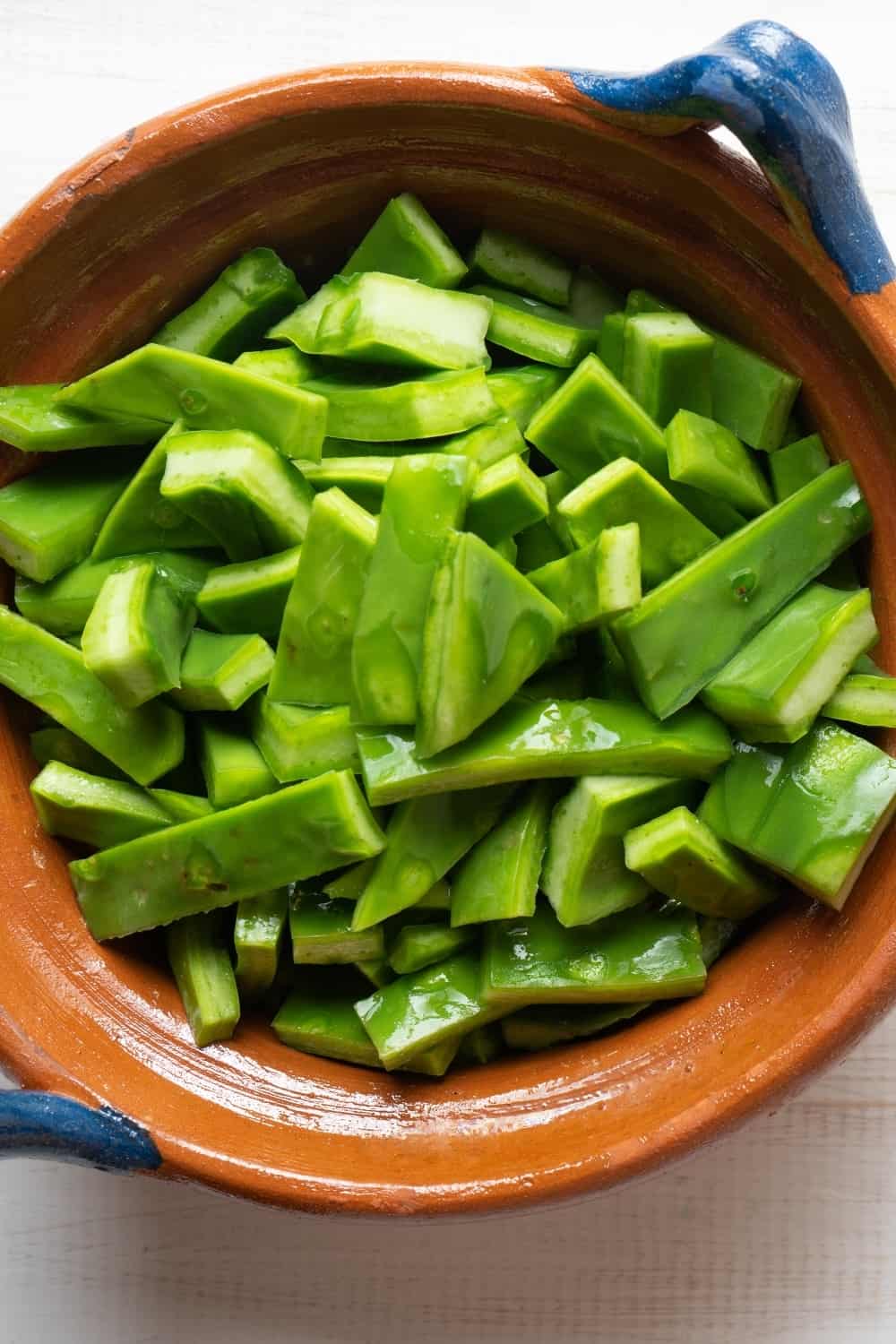
Nopal is a fleshy young tender stem segment of the prickly pear cactus that grows in the southwestern United States and Mexico. Nopal in English means “prickly pear”, and it’s also known as “nopales,” or “nopalitos.”
Nopales have a citrusy and tart flavor, and are popularly eaten in salads and salsas. I daresay that “nopalitos” taste like zucchini, radish, and leek put together.
FUN FACT: Nopales have 114 species common to Mexico, and they are grown on more than 7 million acres in the country.
SEE ALSO: 33 Vegetables That Start With C (From Carrots To Crosnes!)
12. New Zealand spinach

New Zealand spinach is a green, leafy vegetable but it isn’t actually part of the spinach family. HERE’S THE PROOF: Regular spinach is typically grown in the winter, whereas New Zealand spinach thrives in the heat.
New Zealand spinach has high levels of vitamins A, B1, B2, and C. This spinach has low levels of fat and fiber. Also, it has a high oxalate content, which can be potentially dangerous at high concentrations.
FUN FACT: Apparently, Captain Cook and his crew ate New Zealand spinach to prevent scurvy* in the 1700s.
*Scurvy is a disease that occurs due to a severe lack of vitamin C in your diet.
13. New potatoes
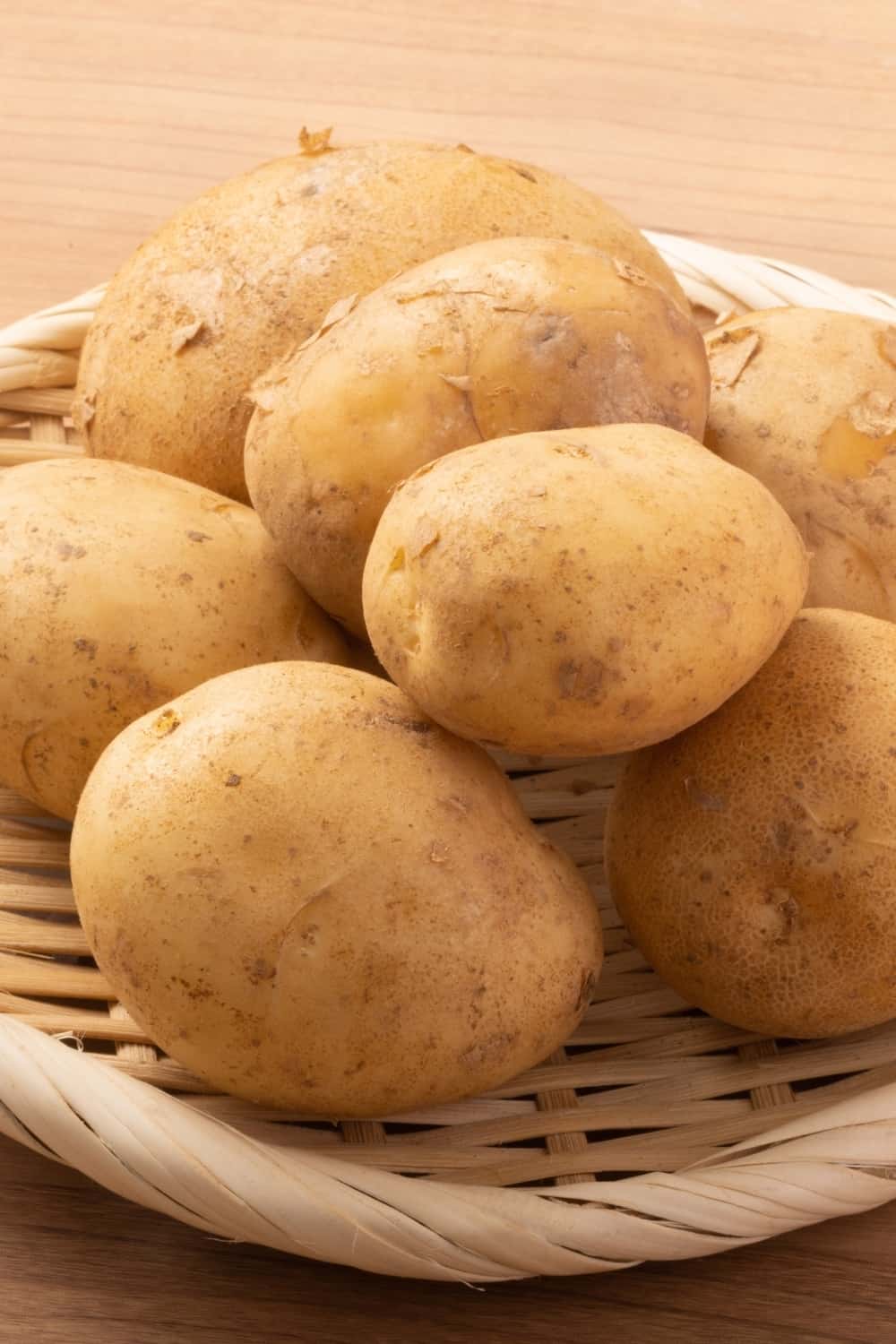
New potatoes are young potatoes that have thin, wispy skins and a crisp, waxy texture.
The best known variety of new potatoes is Jersey Royals.
These potatoes have a milder taste than mature potatoes and can be served boiled, roasted, mashed, or fried. They are particularly suited to salads. Here’s the BEST PART: New potatoes don’t need to be peeled but just gently scrubbed with a cloth or soft brush.
FUN FACT: New potatoes are sweeter than old potatoes because their sugar has not yet converted into starch.
Do You Know More Vegetables That Start With N?
Those were my favorite N veggies but I’m sure there are many others I couldn’t think of at the moment. If you know more vegetables that start with N, feel free to share! Why? Because sharing is caring, right? 😄P.S. I’m 100% sure that you’re ready to nail a victory in that guessing game!

